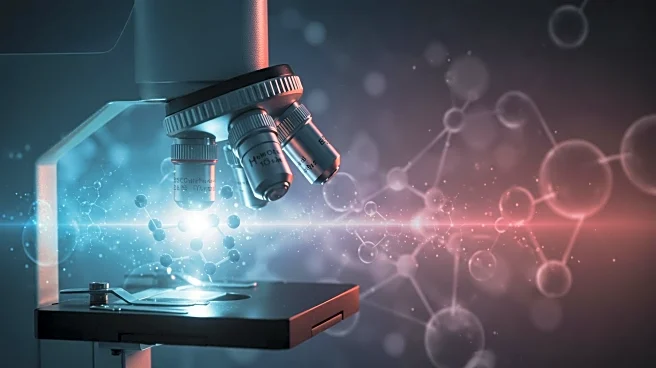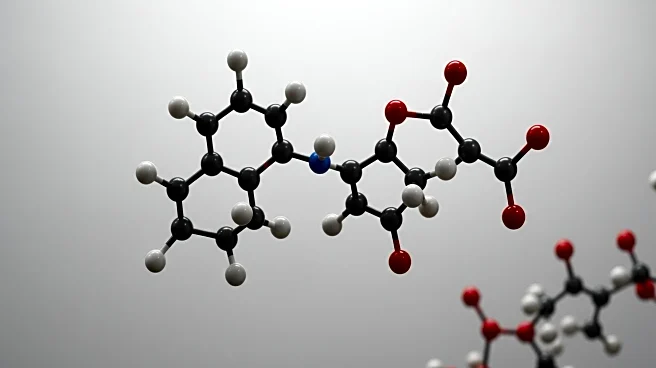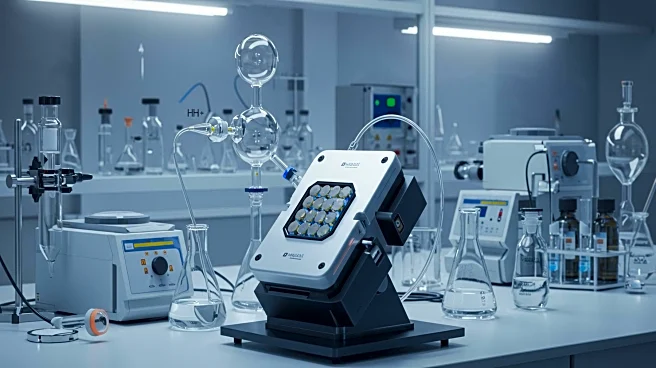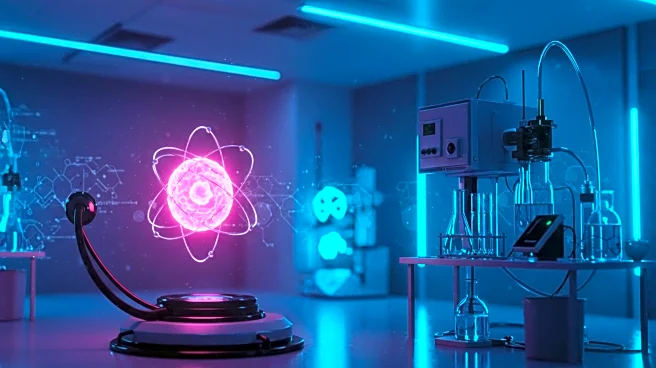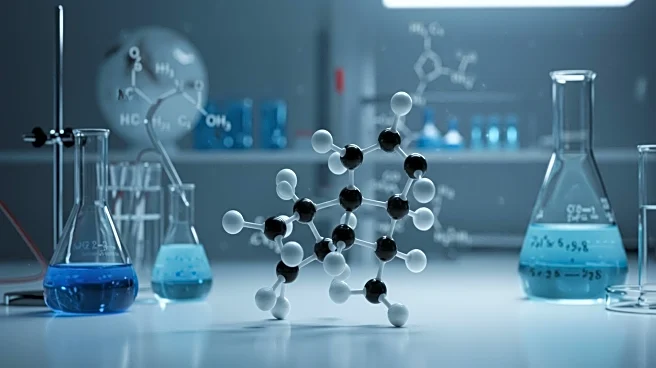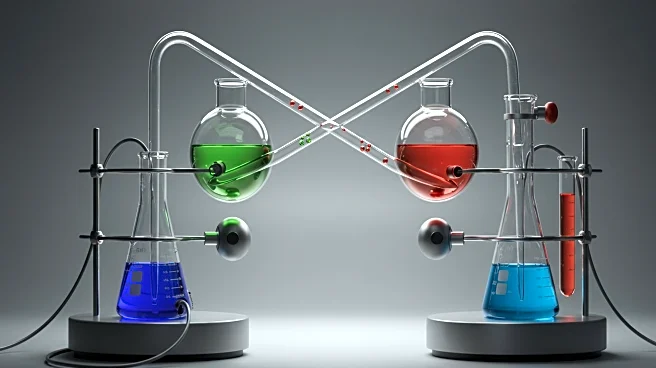What's Happening?
A research team led by Shiotari has successfully utilized Tip-Enhanced Raman Spectroscopy (TERS) to enhance the detection of hydrogen molecules adsorbed onto solid surfaces. This technique merges the chemical sensitivity of Raman spectroscopy with the spatial resolution of scanning tunnelling microscopy (STM). The study focuses on the adsorption of small molecules like H2 and D2, which play a crucial role in hydrogen storage, heterogeneous catalysis, embrittlement, and spin isomer conversion. The challenge in characterizing these weakly physisorbed hydrogen molecules arises from their low adsorption energies, typically ranging from 4 to 7 kJ mol−1, and the requirement for cryogenic conditions. By using an STM tip to manipulate individual molecules and enhance the local electromagnetic field, the researchers were able to detect rotational and vibrational modes of single hydrogen molecules. This setup creates a confined electromagnetic field within a sub-nanometre plasmonic gap, known as a picocavity, which significantly enhances Raman scattering and allows for the direct detection of transitions that are usually inaccessible in weakly physisorbed systems.
Why It's Important?
The ability to detect and characterize hydrogen molecules at the atomic scale has significant implications for various industries and scientific fields. Hydrogen storage and heterogeneous catalysis are critical components in the development of sustainable energy solutions. Enhanced detection methods like TERS could lead to more efficient hydrogen storage systems, which are essential for the advancement of clean energy technologies. Additionally, understanding the adsorption and behavior of hydrogen molecules can improve catalytic processes, potentially leading to more effective industrial applications. The research also contributes to the fundamental understanding of quantum effects at the atomic scale, which could influence future studies in material science and nanotechnology.
What's Next?
The successful application of TERS in detecting hydrogen molecules opens up new avenues for research in nanotechnology and material science. Future studies may focus on expanding the use of TERS to other weakly physisorbed systems, potentially leading to breakthroughs in the characterization of various molecular interactions. Researchers may also explore the integration of TERS with other advanced techniques to further enhance detection capabilities. The findings could prompt collaborations between academic institutions and industries focused on energy storage and catalysis, aiming to translate these scientific advancements into practical applications.
Beyond the Headlines
The development of TERS as a tool for enhanced molecular detection highlights the intersection of quantum physics and material science. This advancement not only contributes to the understanding of molecular interactions but also raises questions about the ethical implications of manipulating atomic-scale processes. As technology progresses, researchers and policymakers must consider the potential impacts on privacy and data security, especially when dealing with sensitive information at the molecular level.
